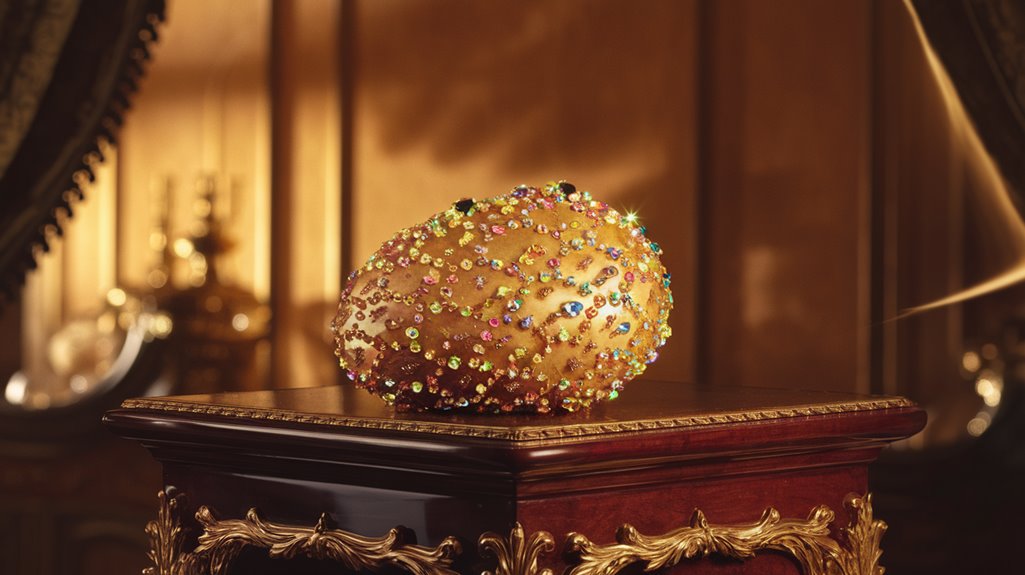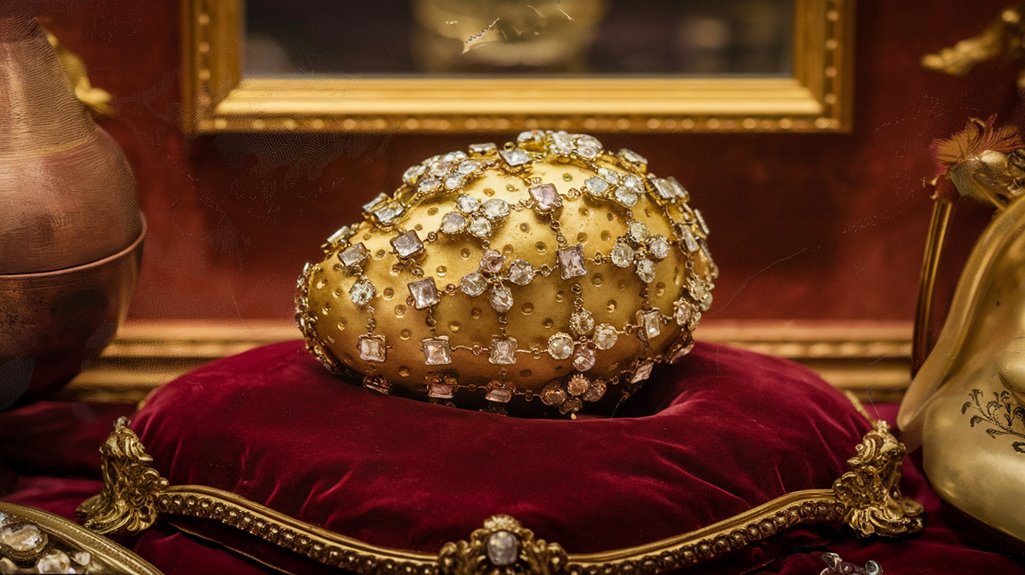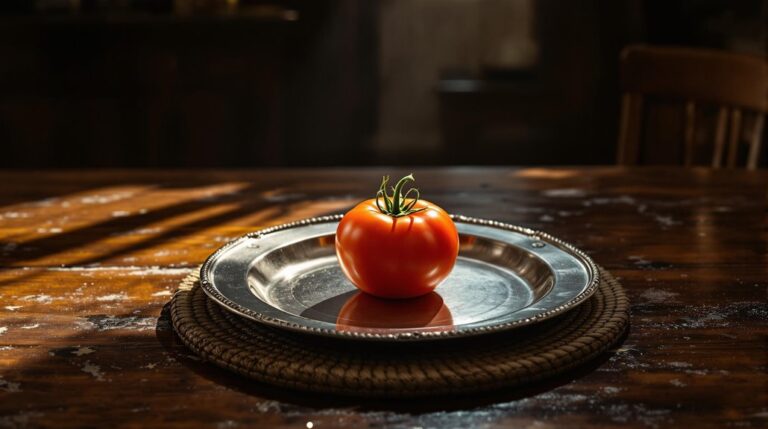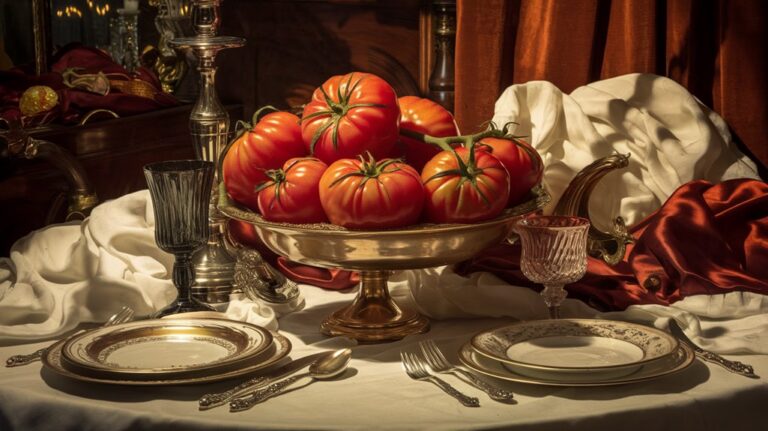The Fabergé Company Once Created a Jeweled Potato
When you think of potatoes, you probably imagine earthy tubers pulled from garden soil, not precious gems crafted by master jewelers. Yet in the domain of Fabergé, where luxury knows no bounds, even the humble potato received a magnificent makeover. You'll find this peculiar creation from 1890 represents more than just a whimsical experiment—it's a proof of how the famed company pushed creative boundaries beyond their iconic eggs. There's an intriguing story behind why this bejeweled spud came to be.
The Surprising Origin of the Fabergé Potato
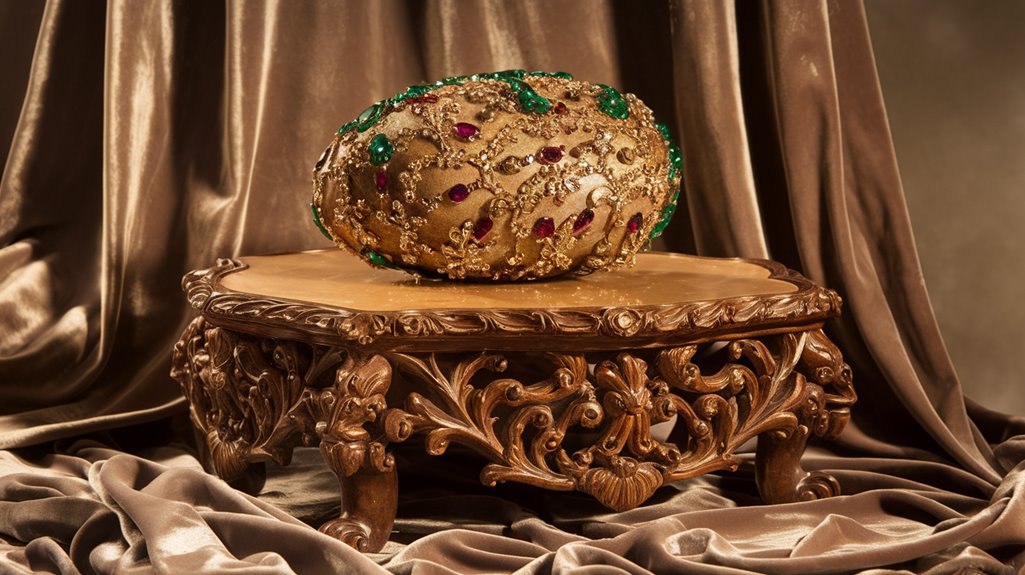
While most people associate Fabergé with its iconic imperial eggs, the story of the Fabergé potato represents a fascinating departure from the jeweler's typical creations. This uniquely carved pink agate box showcases the versatility of Fabergé craftsmanship, demonstrating how the company could transform even humble objects into luxurious works of art.
You might be surprised to learn that this piece's historical significance extends beyond its unusual form. The potato was marked by goldsmith Michael Perkhin, who was responsible for many of the company's most celebrated works. Created during a time when the Fabergé workshop was producing elaborate eggs for the Romanov dynasty, the potato exemplifies the company's ability to blend whimsy with extraordinary artistry. The company's meticulous attention to detail rivaled that of their imperial eggs, which were worth up to 25 million dollars each.
The piece's value was confirmed in 2016 when Christie's auction house sold it for $93,750, proving that even Fabergé's more unconventional creations command impressive prices in today's market.
A Masterpiece of Pink Agate and Gold
Three remarkable features define the Fabergé potato's exquisite design: its polished pink agate body, gold-mounted lid, and delicate fleur-de-lis clasp.
You'll find this unique creation, measuring approximately 4 inches long, showcases the artistic whimsy that set Fabergé apart from other luxury craftsmen of the era.
Under the direction of master goldsmith Michael Perkhin, the potato emerged as a demonstration of Fabergé's luxurious craftsmanship and creative vision. Following in the tradition of the family's Huguenot ancestors who fled from Picardy, France, this piece represents the artistic innovation that became synonymous with the Fabergé name.
Unlike the company's famous Imperial Eggs with their intricate enamelwork, this piece takes a more playful approach while maintaining the workshop's exceptional standards. The renowned workshop's Imperial Eggs often incorporated precious materials like rose-cut diamonds to achieve their distinctive sparkle and sophistication.
The market has recognized its significance – in 2016, Christie's auction house sold this remarkable piece for $93,750 after an enthusiastic bidding war among collectors and Fabergé enthusiasts.
The Historical Context of Fabergé's Unique Creation
During the opulent era of Imperial Russia, Fabergé's creation of this whimsical potato piece reflected the workshop's evolving artistic vision beyond their famous eggs.
You'll find that Peter Carl Fabergé, appointed as the official goldsmith to the Russian Imperial Court in 1842, consistently pushed the boundaries of artistic innovation. His workshop's Imperial craftsmanship wasn't limited to the 50 commissioned eggs – they created various ornate objects, including fruits and flowers, that showcased their mastery of colored gemstones and vibrant enamels.
Under the guidance of master craftsmen like Michael Perkhin, Fabergé's pieces often featured unexpected treasures and elaborate details. Their remarkable success led to a street-level relocation in 1881, marking significant growth from their humble beginnings. Today, Sarah Fabergé, the great-granddaughter of Peter Carl, continues to guide the company's artistic direction while honoring its heritage.
The jeweled potato exemplifies how the company balanced their prestigious royal commissions with playful creativity, demonstrating why their pieces continue to command millions at auctions worldwide.
From Royal Eggs to Precious Vegetables
The creation of Fabergé's jeweled potato marked a bold departure from the workshop's renowned Imperial eggs.
While the company was famous for its royal commissions of elaborate eggs, they weren't afraid to explore unique designs that showcased their versatility and craftsmanship.
This 4-inch pink agate masterpiece, crafted around 1890, demonstrates how Fabergé could transform even the most humble vegetable into a luxurious artwork.
You'll notice the potato's realistic, irregular shape, enhanced by a gold-mounted lid and fleur-de-lis clasp. Some of these exquisite pieces can fetch up to €24 million at auction today.
The piece bears master jeweler Michael Perkhin's hallmark and exemplifies the workshop's innovative spirit.
Their ability to blend naturalistic forms with precious materials proved successful – the potato sold at Christie's for $93,750 in 2016, showing that Fabergé's non-egg creations command significant value.
The Modern Legacy and Value of Fabergé's Potato

While many associate Fabergé primarily with its Imperial eggs, the jeweled potato's successful auction at Christie's for $93,750 in 2016 demonstrates the enduring value of the brand's innovative designs.
The piece's unique provenance, including its reported connection to King Farouk I of Egypt, reflects current market trends where historical significance drives collector interest.
You'll find that today's collector insights emphasize the importance of authentic Fabergé pieces, which are increasingly rare and valuable.
The potato's distinctive features – its pink agate body, gold-mounted lid, and Michael Perkhin's maker's mark – represent the exquisite craftsmanship that makes Fabergé works so sought-after.
The brand's 2009 revival with 'Les Fabuleuses' collection proves that Fabergé's commitment to excellence continues to influence modern luxury markets.

